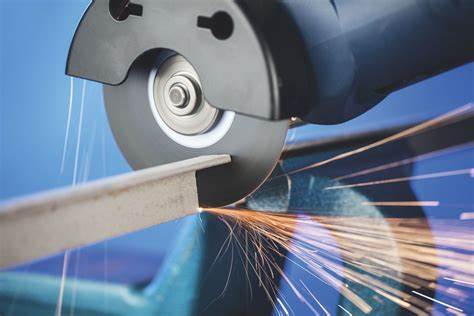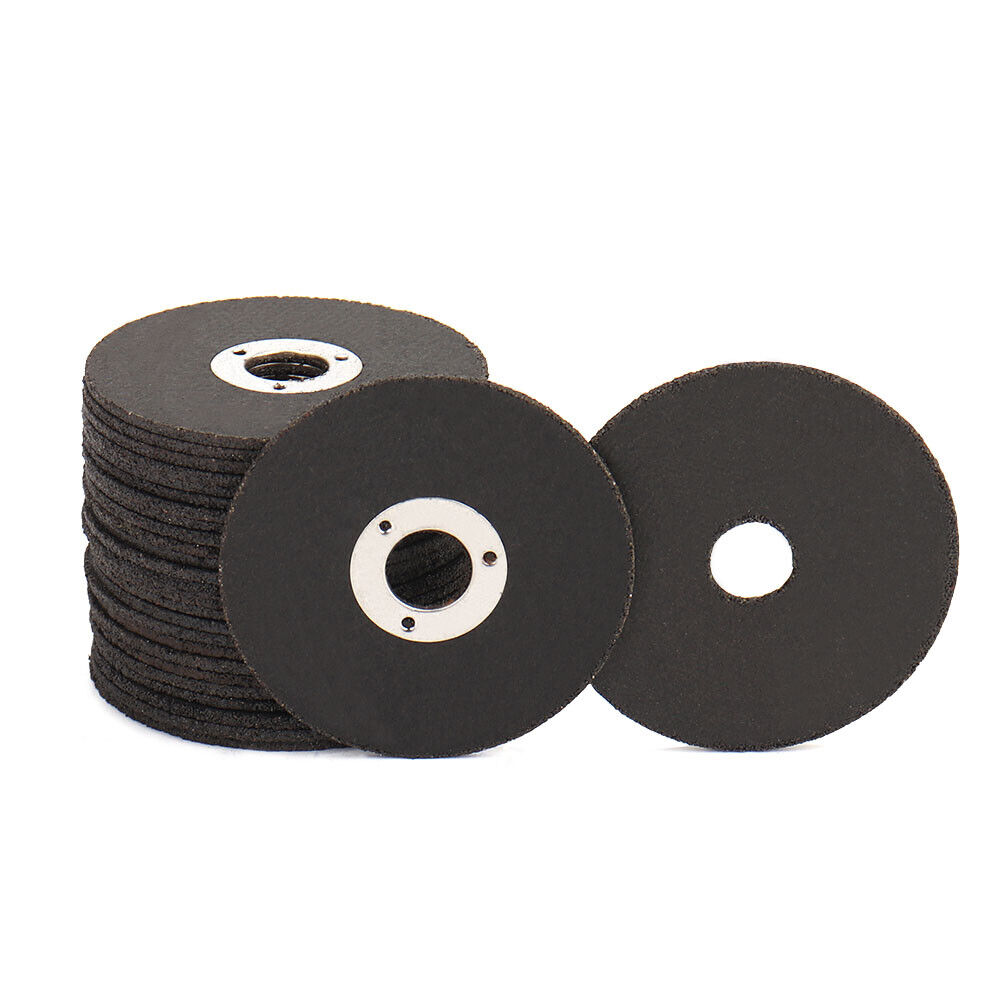Most cutting wheels are manufactured by the cold-press method, in which a mixture of components is pressed into shape at room temperature. The details of processes vary considerably depending upon the type of wheel and the practices of individual companies. For the mass production of small wheels, many portions of the process are automated.
Mixing the ingredients
Preparing the cutting wheel mixture begins with selecting precise quantities of abrasives, bond materials, and additives according to a specific formula. A binder, typically a water-based wetting agent in the case of vitrified wheels, is added to coat the abrasive grains; this coating improves the grains’ adhesion to the binder. The binder also helps the cutting disc wheel retain its shape until the bond is solidified. Some manufacturers simply mix all materials in a single mixer. Others use separate steps to mix abrasive grains with the binder.
Wheel manufacturers often spend considerable effort to develop a satisfactory mixture. The blend must be free-flowing and distribute grain evenly throughout the structure of the cutting disc wheel to assure uniform cutting action and minimal vibration as the wheel rotates during use. This is particularly important for large cutting wheels, which may be as big as several feet in diameter, or for wheels that have a shape other than the familiar flat disk.
Molding
For the most common type of cutting wheel, an annular cutting disc, a predetermined amount of cutting disc wheel mixture is poured into a mold consisting of four pieces: a circular pin the size of the finished wheel’s arbor hole (its center hole); a shell with a 1-inch (2.5-centimeter) wall, about twice as high as the desired cutting disc wheel is thick; and two flat circular plates with diameter and arbor hole sizes equal to those of the cutting wheel. A variety of methods are used to distribute the mixture evenly. Typically, a straight edge pivots about the center arbor pin to spread the mixture throughout the mold.
Using pressures in the range of 100 to 5000 pounds per square inch (psi) for 10 to 30 seconds, a hydraulic press then compacts the mixture into the cutting disc wheel’s final shape. Some manufacturers use gage blocks between the two face plates to limit their movement and establish uniform thickness. Others control wheel thickness by closely monitoring the consistency of the mix and the force of the press.
After the mold has been removed from the press and the cutting wheel stripped from the mold, the cutting wheel is placed on a flat, heatproof carrier. The final shaping of the cutting wheel may take place at this time. All work at this stage has to be done very carefully because the cutting wheel is held together by only the temporary binder. Lighter wheels can be lifted by hand at this stage; heavier ones may be lifted with a hoist or carefully slid on a carrier to be transported to the kiln.
Firing
Generally, the purposes of the firing are to melt the binder around the abrasives and to convert it to a form that will resist the heat and solvents encountered during grinding. A wide range of furnaces and kilns are used to fire cutting disc wheels, and the temperatures vary widely depending upon the type of bond. Wheels with a resin bond are typically fired at a temperature of 300 to 400 degrees Fahrenheit (149 to 204 degrees Celsius), and cutting wheels with vitrified bonds are fired to temperatures between 1700 and 2300 degrees Fahrenheit (927 to 1260 degrees Celsius).
Finishing
After firing, wheels are moved to a finishing area, where arbor holes are reamed or cast to the specified size and the wheel circumference is made concentric with the center. Steps may be necessary to correct the thickness or parallelism of wheel sides, or to create special contours on the side or circumference of the wheel. Cutting wheel Manufacturers also balance large wheels to reduce the vibration that will be generated when the wheel is spun on a cutting disc machine. Once wheels have received labels and other markings, they are ready for shipment to the consumer.


